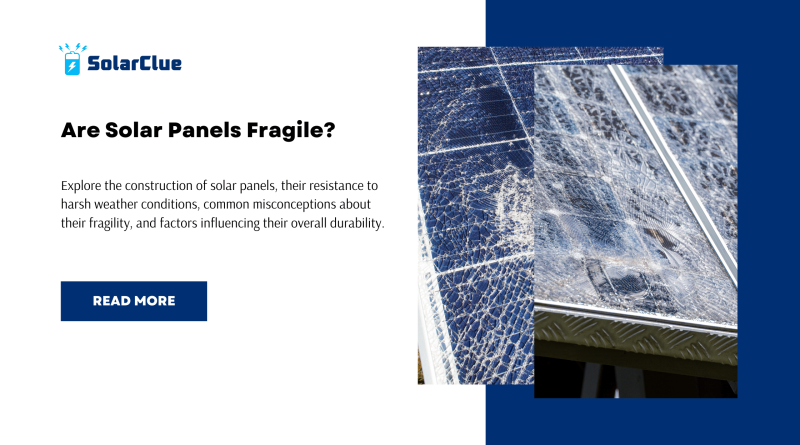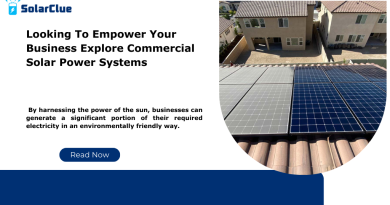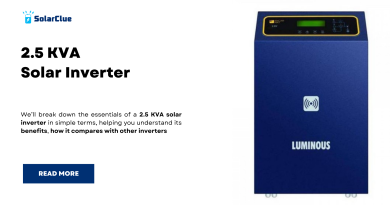Are Solar Panels Fragile?
Solar panels are an increasingly popular solution for renewable energy, offering both environmental and economic benefits. However, questions often arise regarding their durability and ability to withstand various environmental challenges. This blog explores the construction of solar panels, their resistance to harsh weather conditions, common misconceptions about their fragility, and factors influencing their overall durability.
Table of Contents
- 1 The Construction of Solar Panels
- 2 Solar Panel Resistance to Extreme Weather Conditions
- 3 Factors Affecting Solar Panel Durability
- 4 Common Misconceptions About Solar Panel Fragility
- 5 Comparing Solar Panel Durability to Other Building Materials
- 6 The Importance of Proper Installation and Maintenance
- 7 The Role of Warranties in Protecting Against Damage
- 8 Conclusion
The Construction of Solar Panels
Understanding Solar Panel Layers
Solar panels are complex devices composed of multiple layers, each serving a critical function in energy conversion and protection. The core of a solar panel is the photovoltaic (PV) cells, which convert sunlight into electricity. These cells are typically made from silicon and are the heart of the energy production process.
Surrounding the PV cells are encapsulation layers, usually made of ethylene-vinyl acetate (EVA). These layers protect the cells from moisture, dirt, and physical damage while allowing sunlight to reach the cells efficiently.
The Role of Tempered Glass
One of the key components that ensure the durability of solar panels is the use of tempered glass. This glass layer covers the PV cells and encapsulation layers, providing robust protection against environmental factors. Tempered glass is approximately four to five times stronger than regular glass, making it resistant to impacts, scratches, and breakage.
Tempered glass also plays a crucial role in protecting the PV cells from harmful UV radiation, which can degrade the cells over time. Despite its strength, this glass is designed to allow maximum sunlight penetration, ensuring that the energy conversion process is not hindered.
Sturdy Frames for Structural Integrity
The structural integrity of a solar panel is largely dependent on the frame that holds it together. Most solar panel frames are made from durable materials like aluminum or steel, which offer excellent resistance to corrosion and mechanical stress.
Aluminum frames are particularly popular due to their lightweight properties and resistance to rust. These frames provide a secure mount for the tempered glass and other components, ensuring that the solar panel remains intact and functional even in challenging conditions.
Solar Panel Resistance to Extreme Weather Conditions
Wind Resistance
Solar panels are often installed in open areas, such as rooftops or fields, where they are exposed to strong winds. To ensure their durability, solar panels undergo rigorous testing for wind loads. These tests are designed to simulate extreme weather conditions, such as hurricanes, to assess the panels’ ability to withstand high wind speeds.
Most solar panels can withstand wind speeds of up to 140 mph (225 km/h), equivalent to a Category 4 hurricane. Proper installation, including secure mounting and appropriate angling, further enhances wind resistance.
Hail Impact Resistance
Hailstorms can cause significant damage to buildings and vehicles, leading to concerns about the vulnerability of solar panels. However, solar panels are designed to withstand hail impact, and they are tested according to strict International Electrotechnical Commission (IEC) standards.
These tests typically involve firing hailstones at the panels at speeds of up to 50 mph (80 km/h). Solar panels are expected to survive such impacts without any cracks or significant damage. The combination of tempered glass and a sturdy frame ensures that solar panels are more resilient to hail than many might expect.
Snow Load Resistance
In regions prone to heavy snowfall, concerns about snow accumulation on solar panels are common. However, modern solar panels are designed with a snow load tolerance, meaning they can support the weight of snow without collapsing or breaking.
Solar panels are typically installed at an angle, allowing snow to slide off naturally. In addition, the dark surface of the panels absorbs sunlight, which helps melt accumulated snow more quickly.
Solar Panel Resistance to Extreme Weather
| Weather Condition | Resistance Level | Key Features |
|---|---|---|
| Wind | Up to 140 mph | Secure mounting, angled installation |
| Hail | Up to 50 mph impact | Tempered glass, IEC-tested |
| Snow | High load tolerance | Angled installation, snow shedding |
Factors Affecting Solar Panel Durability
Material Quality
The durability of solar panels is significantly influenced by the quality of the materials used in their construction. High-quality solar panels are made with superior materials that enhance their ability to withstand environmental stressors over time. This includes high-grade silicon for photovoltaic cells, premium EVA for encapsulation layers, and corrosion-resistant aluminum for frames.
Investing in high-quality materials not only improves the performance and efficiency of solar panels but also extends their lifespan. On the other hand, low-quality materials can lead to premature degradation, reduced energy output, and a higher likelihood of damage under harsh conditions.
Installation Practices
Proper installation is crucial to the durability and longevity of solar panels. Even the most durable solar panels can be compromised if not installed correctly. Professional installation ensures that panels are securely mounted, properly angled, and adequately spaced, minimizing the risk of damage from wind, snow, or other environmental factors.
Common installation mistakes, such as improper sealing or inadequate support, can lead to issues like water infiltration, frame warping, or even complete system failure. Therefore, choosing a reputable and experienced installer is essential for ensuring the long-term durability of your solar investment.
Geographic Location
The geographic location where solar panels are installed plays a significant role in their durability. Environmental factors such as temperature fluctuations, humidity, and exposure to salty air in coastal regions can impact the lifespan of solar panels.
For example, solar panels installed in desert regions must withstand extreme heat, while those in coastal areas must resist corrosion from saltwater. Manufacturers often offer panels specifically designed for challenging environments, with enhanced protective coatings or materials that resist environmental degradation.
Common Misconceptions About Solar Panel Fragility
Solar Panels and Fragility Myths
There are several misconceptions about the fragility of solar panels that may discourage potential users from investing in solar energy. One common myth is that solar panels are easily shattered or damaged by minor impacts, such as falling branches or small debris. However, as discussed earlier, solar panels are constructed with tempered glass and sturdy frames, making them much more resilient than many people believe.
Another misconception is that solar panels cannot withstand extreme weather conditions, such as hailstorms or high winds. In reality, solar panels are rigorously tested to meet international standards for impact resistance and wind loads, ensuring they can endure severe weather without sustaining significant damage.
Case Studies of Solar Panel Resilience
Real-world examples further dispel the myths about solar panel fragility. For instance, in 2017, Hurricane Maria devastated Puerto Rico with sustained winds exceeding 155 mph. Despite the catastrophic damage to much of the island’s infrastructure, many solar panel systems remained intact and operational, providing critical power during the recovery efforts.
In another example, a severe hailstorm struck Denver, Colorado, in 2017, with hailstones measuring up to 2.75 inches in diameter. While the storm caused widespread damage to vehicles and rooftops, a nearby solar farm reported only minor damage to a small fraction of its panels, demonstrating their impressive resilience.
Comparing Solar Panel Durability to Other Building Materials
Solar Panels vs. Roofing Materials
When comparing the durability of solar panels to traditional roofing materials, such as asphalt shingles or tiles, solar panels often come out ahead. Asphalt shingles, for example, are susceptible to damage from wind, hail, and extreme temperatures, requiring regular maintenance and replacement every 15 to 20 years. In contrast, solar panels are designed to last 25 to 30 years or more, withstanding the same environmental challenges without significant degradation.
Moreover, solar panels can provide an additional layer of protection to the roof beneath them, shielding it from the elements and potentially extending its lifespan. In many cases, homeowners find that their roofs require less maintenance when covered by solar panels.
Solar Panels vs. Windows
Solar panels are often compared to glass windows in terms of impact resistance. While both are made of glass, solar panels use tempered glass, which is much stronger and more resistant to breakage than the standard glass used in windows. Tempered glass can withstand impacts from hailstones and flying debris, making it more durable in harsh weather conditions.
In contrast, standard windows are more prone to cracking or shattering under similar conditions, making solar panels a more robust option for withstanding environmental stress.
The Importance of Proper Installation and Maintenance
Installation Best Practices
Proper installation is key to maximizing the durability and efficiency of solar panels. Best practices in installation include ensuring that panels are securely mounted, correctly angled to capture the maximum amount of sunlight, and spaced appropriately to prevent overheating. Additionally, using high-quality mounting hardware and fasteners is crucial to prevent loosening or corrosion over time.
An important aspect of installation is ensuring that the solar array is properly grounded to protect against electrical surges and lightning strikes. Poor grounding can lead to system failures and even pose safety risks. Engaging a certified professional with experience in solar installations ensures that these critical factors are adequately addressed.
Regular Maintenance for Longevity
While solar panels are generally low-maintenance, regular inspections and cleaning are important to maintain their performance and longevity. Dust, dirt, and debris can accumulate on the surface of the panels, reducing their efficiency by blocking sunlight. Cleaning the panels with water and a soft brush or hiring a professional cleaning service can help maintain optimal energy output.
Routine inspections are also necessary to check for any signs of wear, damage, or loose connections. Early detection of issues like cracked glass, loose frames, or corroded wiring can prevent more significant problems down the line. Additionally, checking for shading from new tree growth or other obstructions ensures that the panels continue to receive maximum sunlight.
The Lifespan of Solar Panels and Their Degradation Over Time
Expected Lifespan of Modern Solar Panels
Modern solar panels are designed to have a long operational life, typically ranging from 25 to 30 years or more. During this period, they are expected to maintain a significant portion of their initial efficiency, even as they gradually degrade over time. The lifespan of a solar panel can vary based on factors like material quality, installation practices, and environmental conditions.
Manufacturers often guarantee a certain level of performance, usually around 80% of the original efficiency after 25 years. This means that even after decades of use, solar panels continue to produce a substantial amount of electricity, making them a reliable long-term investment.
Understanding Degradation Rates
Solar panels experience a gradual reduction in efficiency over time, a process known as degradation. On average, solar panels degrade at a rate of about 0.5% to 1% per year. This degradation rate means that after 25 years, a panel may still operate at around 75% to 87.5% of its original capacity.
Factors influencing degradation rates include the quality of the materials used, the local climate, and the level of maintenance. For example, panels installed in extremely hot or humid environments may degrade faster due to increased thermal stress and moisture exposure. However, with proper care and maintenance, many solar panels can exceed their expected lifespan with minimal performance loss.
The Role of Warranties in Protecting Against Damage
Types of Warranties Available
When investing in solar panels, it’s essential to understand the different types of warranties offered by manufacturers. Generally, there are two main types of warranties: product warranties and performance warranties.
- Product Warranty: This warranty covers the physical components of the solar panel, such as the glass, frame, and junction box. It typically lasts for 10 to 25 years, protecting against defects in materials and workmanship.
- Performance Warranty: This warranty guarantees that the solar panel will maintain a certain level of efficiency over a specified period, usually 25 years. It ensures that the panel will continue to produce a minimum percentage of its rated power output, typically around 80%.
How Warranties Provide Peace of Mind
Warranties offer peace of mind by protecting the investment in solar panels against unforeseen issues. A comprehensive warranty can cover repair or replacement costs if the panels fail to perform as expected or if they suffer damage due to manufacturing defects.
It’s important to carefully review the terms of the warranty, including any exclusions or conditions that may void the coverage. For example, some warranties may not cover damage caused by extreme weather events or improper installation. Understanding the warranty terms helps ensure that you are fully protected and can take advantage of any benefits if issues arise.
Conclusion
Solar panels are a durable and resilient technology, designed to withstand a wide range of environmental challenges. The construction of solar panels, featuring tempered glass and sturdy frames, provides robust protection against impacts, wind, hail, and snow. While factors such as material quality, proper installation, and geographic location can influence the longevity of solar panels, regular maintenance and adherence to best practices can further extend their lifespan.
Common misconceptions about the fragility of solar panels are often dispelled when examining real-world examples of their performance in extreme weather conditions. Compared to other building materials, solar panels offer exceptional durability, making them a reliable choice for long-term energy production.
Understanding the role of warranties and the expected lifespan of solar panels is crucial for protecting your investment and ensuring sustained energy output over decades. By choosing high-quality materials, hiring experienced installers, and maintaining your panels, you can enjoy the benefits of clean, renewable energy for many years to come.
Here at SolarClue®, we offer a smart, practical, and “beautiful” solution. You will be answered for all the questions related to Solar.
We provide all kinds of brands that are the Best Solar panels in India.
If you are the one who is planning for the solar power system. Don’t hesitate to contact our team!
Looking forward to empowering you with solar energy, just like hundreds of our other clients!
Frequently Asked Questions (FAQs)
1. How long do solar panels typically last?
Modern solar panels typically last between 25 to 30 years, maintaining a significant portion of their initial efficiency even after decades of use.
2. Can solar panels really withstand hail and strong winds?
Yes, solar panels are tested to withstand hail impact at speeds of up to 50 mph and can endure wind speeds of up to 140 mph, equivalent to a Category 4 hurricane.
3. What happens if my solar panels degrade faster than expected?
Most solar panels come with performance warranties that guarantee a certain level of efficiency over time. If degradation exceeds the warranty terms, the manufacturer may replace or repair the panels.
4. Do solar panels require a lot of maintenance?
Solar panels are generally low-maintenance, but regular cleaning and inspections can help maintain their efficiency and extend their lifespan.
5. Are solar panels more durable than traditional roofing materials?
In many cases, yes. Solar panels often last longer and require less maintenance than traditional roofing materials like asphalt shingles, offering additional protection to the roof beneath them.



